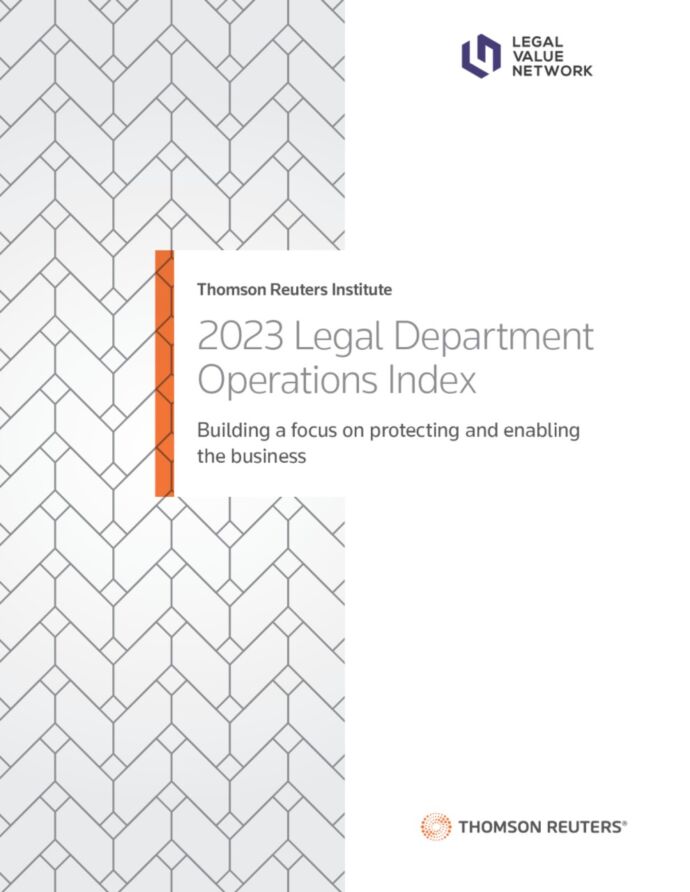How general counsels can navigate marketing strategy for your business that follows industry standards and the law
When a user visits your firm or company’s website, they should be able to easily navigate the site, learn something, and hopefully improve their lives in some way.
While you hope to work with this user and bring them on as client or customer, you must avoid morally questionable or even illegal tactics, known as dark patterns, in your marketing.
Jump to:
| What are dark patterns? |
| Law enforcement on dark patterns |
| Best digital marketing practices |
 | Special Report 2023 Legal Department Operations Index |
What are dark patterns?
Dark patterns are tactics used to trick or deceive users into taking a certain action. Sometimes, they give off a false sense of urgency, manipulate users into making a certain choice, or disguise advertising.
Dark patterns in marketing include such things as deception, covert information, different treatment for different customers, restrictive access, information overload, and stirring up emotions.
For example, a dark pattern could include hiding your homepage behind a piece of gated content, with the user required to enter their email address to access it. Or the unsubscribe button for your email list so small or in a color that’s hard to see so that people can’t easily unsubscribe from your newsletter. Perhaps there’s a timer on your website for a campaign that’s ending, but the campaign never actually stops.
Not only could dark patterns prompt a user to leave your site — resulting in a loss of potential business — they also could prompt an inquiry from federal regulators and/or state attorney generals.
Law enforcement on dark patterns
In October 2021, the Federal Trade Commission (FTC) released a dark patterns enforcement policy statement advising companies “against deploying illegal dark patterns that trick or trap consumers into subscription services.”
The FTC has taken enforcement action against alleged practitioners of dark patterns, including the case of online early education site ABCmouse. The FTC alleged a “roach motel” dark pattern, in which the company directed customers to sign up for a membership without providing sufficient information, and then put a series of obstacles in place to cancel. The agency in September 2020 reached a $10 million settlement with ABCmouse that required the company to alter its “negative option marketing and billing practices.”
On the state level, dark patterns in marketing have also faced consequences. In New York, the attorney general reached a $2.6 million settlement with online travel agency Fareportal over allegations the company created false urgency to pressure customers to make purchases. In Washington, D.C., GrubHub agreed to a $3.5 million settlement over claims it charged hidden fees to customers and deployed deceptive marketing practices.
As these examples show, dark pattern marketing can result in distrust among consumers and even get your company into legal hot water.
Best digital marketing practices
It’s important for marketing and the legal department to ensure their marketing plan meets federal, state, and local regulations. This means connecting on potential issues around your website, social media posts, press releases, sweepstakes, copyrights, and emails and other forms of communication. Questions to ask include: Are you following social media policy guidelines? Do you post rules of contests in the fine print, where users can see it?
Additionally, it’s important to monitor content for potential infringement on intellectual property rights, respond to customer comments, refrain from making false claims, and protect customers’ security by using encryption and other appropriate measures.
According to the National Advertising Division (NAD), it’s also critical to clearly identify advertising, disclose how you’re collecting and using personal information, and avoid interface designs that may have the effect of hindering or eliminating user choices.
Start with the right marketing practices
By cultivating a positive digital experience and avoiding dark patterns in marketing, you can attract more customers, boost your bottom line, and cement your reputation as a trustworthy company that provides value to its clientele.
Want to learn more about dark patterns in marketing? Then check out our webinar, Dark Patterns in the Spotlight: When Does Design Become Deception? Sign up and receive the link to watch.
 | Webinar When Does Design Become Deception? |











